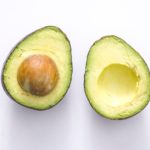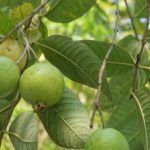The Scientific Name of Pear
The pear is one of the oldest cultivated and beloved fruits. This wonderful and alluring fruit of the Rose family fascinated people since ancient times. The Greek poet laureate Homer mentioned the pear as the “ gift of the gods”. The scientific name of the pear is Pyrus.
While the pear reportedly originated around 5,000 years ago in western Asia, there are some speculations that people of the Stone Age discovered this fruit. This amazing fruit was praised by Greeks and Romans and introduced in America by the early colonists in 1620. Missionaries introduced pear trees in the mission gardens in California and Mexico.
The pear is the edible fruit of a pear tree and is an important fruit of temperate regions. Pear trees require cold climates to produce fruits. Since pears fall in the same family as apples, the fruit, a pome, also resembles the apple. The pear is the second most popular fruit in America after the apple. The fruit generally has a large round bottom that tapers towards the top. The skin is paper-thin and can be yellow, green, brown, red, or a combination of those depending on the variety. The core of the fruit bears several seeds.

Pears come in different varieties. However, the leading varieties are:
- Anjou – originated in France, skin – yellow, green, or light green
- Bartlett – popular variety, called William pear in Britain
- Comice – often considered as the best pear variety, smooth juicy flesh a yellow-green or pinkish-brown skin
- Congerence – English winter pears, long and slender in shape
When buying a pear it should be carefully selected. Since pears are very perishable, they come to market in an unripe condition and require a few days to ripen. If you buy an unripe pear, keep it at room temperature for a few days; then it will be ready to eat. Avoid pears that have damaged scars or soft spots on the skin.
The Scientific Names of Asian and European Pears
There are two popular varieties of pear. First is the Asian pear, with the scientific name Pyrus pyrifolia. The second popular variety of pear is the European pear. The European pear scientific name is Pyrus communis.
Fresh pears are delicious as well as nutritious if eaten as is. Eat them after washing gently under cold water. Since the skin of the pear provides some of the necessary fibers, it is recommended to eat the entire fruit.
Pears can be a good combination in salads with mustard greens, watercress, leeks, or walnuts. Pears can also be served as a delightful dessert with cheese.
A pear is not only full of flavor; it is full of fiber too. A fresh pear offers dietary fiber in the form of pectin, which promotes cardiovascular and colon health. Pears are also a good source of Vitamin c, which protects the body from free radicals. The pear also contains a good amount of Potassium, the most necessary mineral.



























